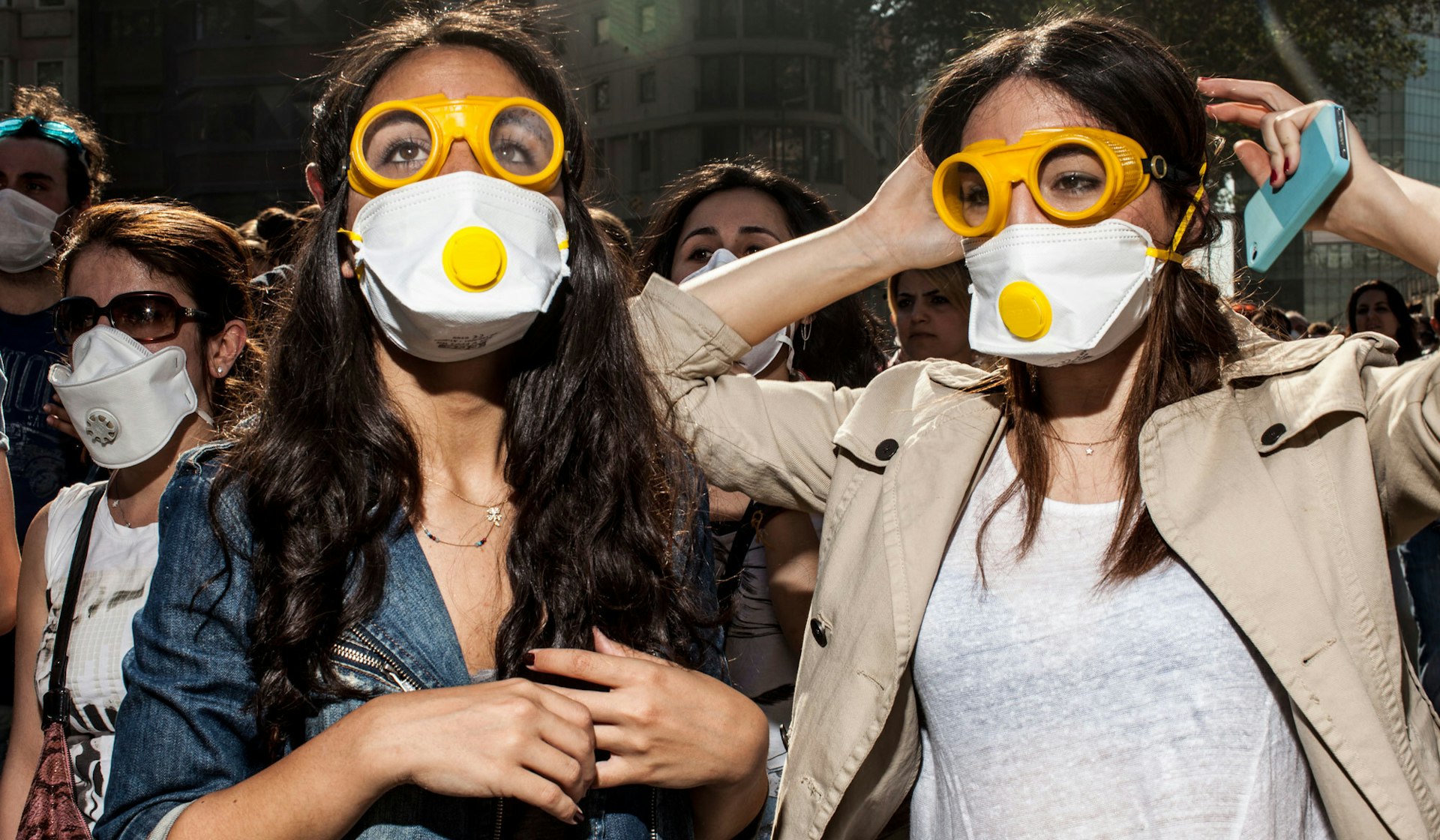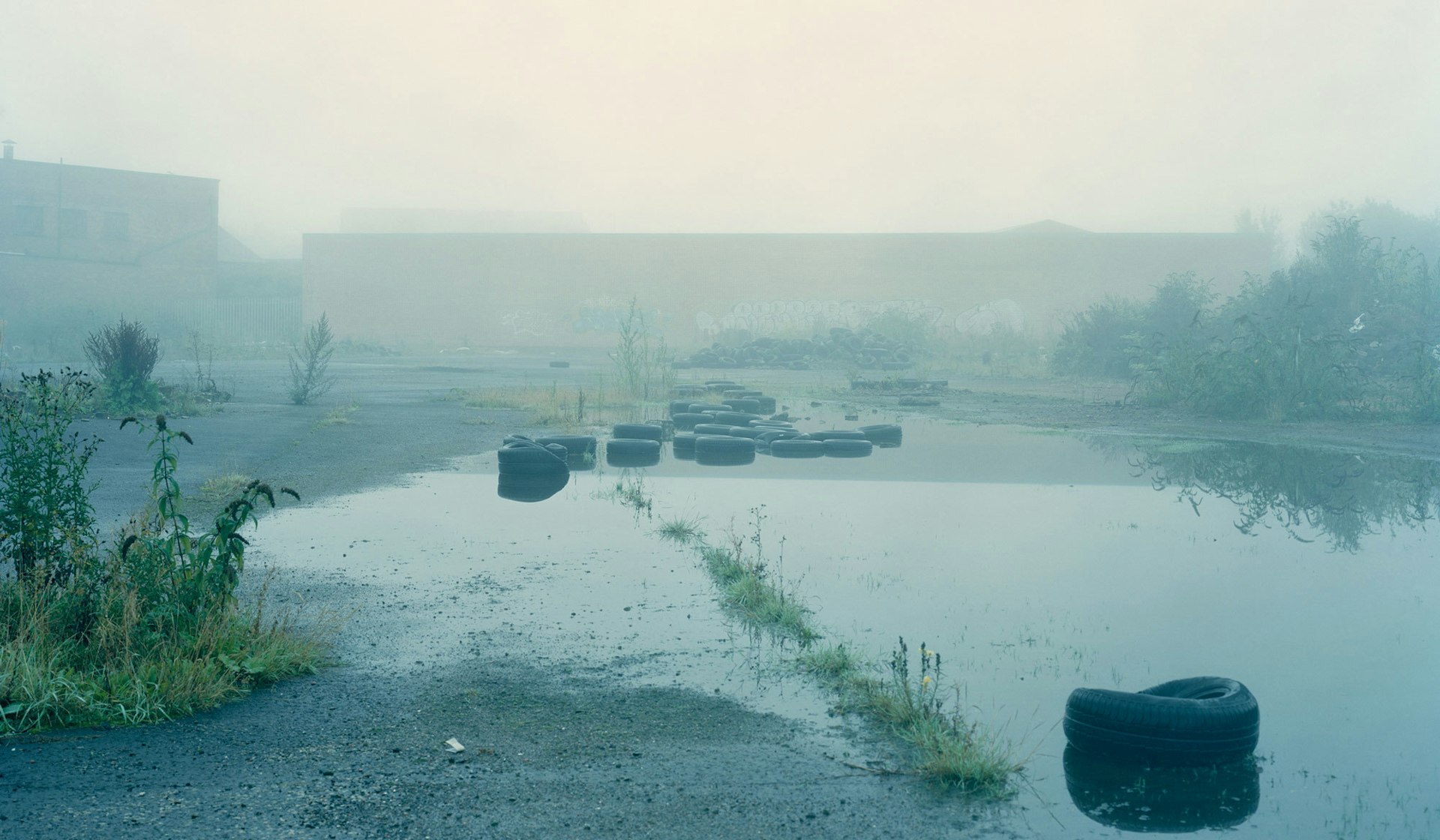
Guy Martin
- Text by Guy Martin
- Photography by Guy Martin
Guy Martin is an internationally acclaimed documentary photographer (and longtime surfer) who takes an immersive approach to every project – from the pit of a punk gig to the minutiae of life on the frontline – with a sensitivity and insight that can turn the whole world on its head in a single shot.
His reportage from the Gezi Park protests in Turkey won him first place in the ‘Current Affairs’ category of the 2014 Sony World Photography Awards last night, April 30. As a long-time collaborator of Huck’s, we invited Guy to describe the process behind his iconic shots for our annual Documentary Photography Special Issue of the magazine in October 2013. This is what Guy had to say.
Two years ago, after being wounded in Libya, I made a promise to myself and family and friends to never cover war, civil unrest or anything that could put my life at risk. After witnessing the Arab revolutions in Egypt and Libya, my desire to photograph violent political events had never been lower. In short, I had turned my back on anybody and anything that I thought would cause me harm.
However, I now live in Istanbul — a huge, bustling Turkish metropolis affected by foreign policy dilemmas and internal political conflict. In June, I witnessed a burgeoning protest movement against the construction of another Mosque and shopping precinct on one of the city’s last slivers of green space. Corruption seems to be endemic, and any spare green area is quickly developed without public consultation. The city already has a population of close to 20 million people and green space is at a premium.
I wanted to join the protestors and see for myself what was happening twenty minutes from where I live. As I stepped on the metro, I was hit with a knot in my stomach — that swirling, vomit-inducing feeling that only happens when you’re utterly petrified. The train came to a stop and every carriage erupted with loud clapping as passengers banged on any object that came into view. It continued as people made their way up the escalators into the burning midday heat.
For the next two days I watched from the periphery. Tear gas was fired, barricades were constructed, fires burned and stones were thrown. Angry anarchists confronted police in Gezi Park — where I saw mothers bring their young children to witness a momentous event happening in their city. In Istanbul the protesters seemed almost entirely made up of young men and women who were secular and left wing. Soon, an Occupy Gezi Park movement formed, but the protesters’ motives varied: students finally felt they were part of a Western-style, pro-democracy sit-in; left-wing political parties used the park as a soapbox for grievances against Prime Minister Tayip Erdogan and increasing regulations against public liberty. Just seven days prior, Erdogan had proposed a controversial bill that would curtail alcohol sales and advertising.
There was one thing that united all protesters. And that was the overwhelming force used by police on unarmed protesters. Tear gas clouds filled the Istanbul skyline for weeks on end, canisters and rubber bullets were fired at close range, sound bombs were hurled into the tents of Gezi Park and pepper spray was used on protesting women. One morning, a battalion of riot police fired multiple tear gas rounds down the stairs of the Taksim Metro entrance (the equivalent of firing tear gas down the escalators of Leicester Square) as commuters stepped into the day for work choking, eyes burning, temporarily blinded and disorientated.
By late June the Police, emboldened by their ability to use whatever force they saw fit, began changing into plain clothes to blend in with protesters and make arrests. There are few things more frightening than being chased through the steep slopes and tight alleys of Istanbul while being shot at with tear gas. The rounds are the size of two tennis balls and can kill if aimed at the head. By now, in an eerie similarity to events in Cairo, Egypt, the government began busing in supporters from pro-Erdogan districts. I’ll never forget hearing one government supporter at a hastily arranged Erdogan rally shout, “Go gas them Captain, break their hands!”
As June drew to a close, the protests died down. The Gezi Park camp had been stormed and torn down by security forces. Targeted arrests were made of medical staff that helped injured protesters. Prominent, dissenting voices who used Facebook and Twitter to galvanise and spread the protesters’ message were arrested in the night. Soap actors that supported the protesters were arrested on trumped-up drugs charges and foreign media were targeted by the pro-government channels for “spreading lies and misinformation”.
Throughout June, I made these pictures with no assignment in hand and no particular desire to make a coherent body of work. My purpose was to just witness and to observe. My only objective was to pursue the events with a sharper and more critical eye than I had ever used before. The drama unfolding on the streets of Istanbul was a rare opportunity for those that wanted to voice opposition to their increasingly powerful government. It was a battle not for the streets of this ancient city but for the webpages, TV stories, Instagram feeds and newspaper pages that are dominated by pro-government voices. As Istanbul burned and the BBC and CNN aired video feeds of barricades being built, police firing tear gas and thousands of protesters massing on Taksim Square, CNN Turk was airing a documentary about Penguins from 2010.
You can see more work on Guy’s website and more award-winning photography on the Sony World Photography Awards 2014 website.
This story originally appeared in Huck 041 – The Documentary Photography Issue.
